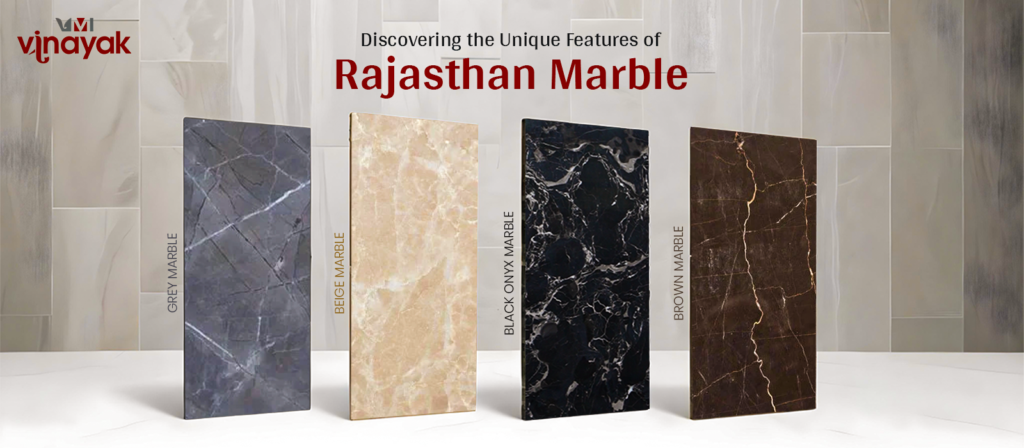1. Introduction to Rajasthan Marble
The marble of Rajasthan is famous worldwide for its beauty, durability, and historical value. Its aesthetic has made it popular for architectural and artistic work for centuries.
A. Historical Significance
Thus, Rajasthan marble reflects cultural and architectural development and success stories. This limestone has been used in famous structures like the Taj Mahal, forts and palaces. The past of marble mining in Rajasthan goes back to the early periods when it was used to construct temples and sculptures as symbols of spirituality and royalty.
B. Geographical Source
Rajasthan boasts some of the most extensive marble mining globally. Some critical areas known for extracting marble are Makrana, Kishangarh and Rajsamand. Some factors include the geological formations’ continued lower form of the marble, making it distinct localities-wise.
C. Importance in Indian Culture
Marble is essential in the Indian context, mainly when used in architecture. India, particularly Rajasthan, is well-associated with worship houses and royal palaces, all of which use marble. It represents purity, strength and stamina.
2. Unique Aesthetic Qualities
Rajasthan marble is available in various colours and vibrantly spectacular patterns used in traditional and modern architecture.
A. Varied Color Palette
The marble prevailing in Rajasthan can also be white, green, pink, and yellow, depending on its mineral colour. The diversity is due to the composition of minerals during formation. Each colour has its meaning: white marbles are associated with purity, while green marbles symbolize growth.
B. Distinctive Veining Patterns
Rajasthan marble has refined and elaborate veining. This is created by veins, which are developed through the deposition of minerals and give a dimension and esthetic to the stone. They can be narrow or broad, making paths on the marble. Each of these slabs of marble can be an art in all.
C. Texture Variations
Rajasthan marble can be in smooth, rough or honed finishes. The finish can affect the look of the stone and its maintenance. Polished marble has shiny surfaces used indoors, while honed finishes have dull surfaces used outdoors.
3. Physical and Chemical Properties
Rajasthan marbles have good physical and chemical properties.
A. Durability and Strength
Rajasthan marble is durable and water-resistant, which makes it ideal for construction. It can bear essential load and stress both outdoors and indoors.
B. Porosity and Water Absorption
It is porous in its natural state and hence has a grainy structure. Its water absorption rate is considerably low compared to different types of natural stones, but it is ideal for any use.
C. Heat Resistance
Rajasthan marble has heat endurance and can withstand temperature, ideal for warmer and colder zones. Its thermal characteristics enable it to retain its structure at high temperatures.
4. Applications of Rajasthan Marble
Rajasthan marble is used in construction, interior design, and artistic sectors.
A. Architecture and Construction
Rajasthan marble has been used in many structures, from religious temples to commercial buildings. Some buildings that use Rajasthan marble are the Taj Mahal, Jaipur’s City Palace and hotels, Udaipur’s Lake Palace.
B. Interior Design
In interior designs, marble is often used in flooring, countertops, and walls. The opulent look of Rajasthan marble also helps create accent areas in the living, bathroom, and cooking areas.
C. Art and Craft
Rajasthan has a rich history of working with marble; many places depict this art and craft. Cultural productions include carved sculptures, art objects, and even jewellery attributed to marble by local artists and jewellers.
5. Sustainability and Ethical Practices
There has been a rise in the number of people following sustainable and ethical standards in the marble industry due to increased product demands.
A. Mining Practices
Marble mining has several risks, one of which is its environmental effects. However, measures are being taken to implement environmentally friendly mining practices such as cutting waste and ecological harm.
B. Artisan Welfare
The conditions in which artisans who deal with Rajasthan marble are essential. Ethical sourcing programs guarantee that local workers are paid reasonable wages for their work and creativity in the products.
C. Recyclability and Lifecycle
Rajasthan marble is not only hard-wearing in nature but also recyclable. At the end of its useful life as a building material, it can be recycled into other more manageable artworks, such as bricks, or crushed up and used in different construction works.
6. Conclusion
Rajasthan marble has high aesthetic utility, physical strength and cultural significance in Rajasthan and India. Come in a range of colours with an extra flair of weaving over it, the marble offers extra heat conductivity, making it suitable for architecture and artwork. To date, marble’s elegance and versatility have placed it among the most demanded products and will remain relevant in the future.
The marble found in Rajasthan is characterized by colours and shades that are different from the normal ones. It distinguishes itself from the other marble varieties by its pattern and an extensive variety of textures.
One can sustain the condition of Rajasthan marble by sealing the stones frequently, using soft cleaning agents and refraining from coming into contact with acidic materials.
Some marble suppliers engage in environmentally friendly mining and processing; some marble products can be obtained from ethical suppliers.
Rajasthan marble is ideal for flooring, countertops, and other wall decorations. It is also effective in making highlights in interior design, such as in living or dining areas and kitchen essentials.
Rajasthan marble is reasonably priced compared to other natural stones and thus is within reach of the high-end and the average class for construction.


